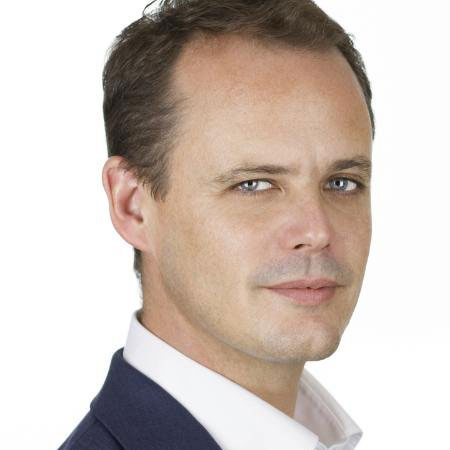Why is it that whenever I talk to a Brit I immediately think of one or another scene from Monty Python? Blame it on a misspent youth, I guess. So you can imagine where my mind first drifted to when Ashley Friedlein, CEO of Econsultancy, started talking to me about pi-shaped marketers:
Okay, now that I’ve taken you to instructions on pie silliness, let’s get back to Friedlein who offers seriously heady counsel on why marketers need to get both sides of their brain’s working (thus the pi-shape) if they hope to succeed in today’s data-rich environment. (For those of you unfamiliar with Econsultancy, founded in 1999, its a research and training group specializing in all things digital. I am a big fan of their research and highly recommend subscribing to their blog.)
Drew: You’ve talked about the rise of the ‘pi-shaped marketer’ in today’s modern marketing environment. First of all, how do you define the term, and what kind of background or experience would a pi-shaped person bring?
One thing that has become apparent with the rise of digital marketing is the sheer number of channels and techniques at the disposal of companies. There are a huge variety of ways to engage your customer base. That number is still growing. What this means is that companies at the cutting edge need to be able to maximize their results across all these channels, particularly as marketers move towards becoming the CEOs of tomorrow. In my opinion, this requires a special mix of many talents and attributes.
A pi-shaped marketer is essentially someone who has a wide breadth of skills and knowledge across various marketing disciplines, but crucially possesses both ‘left-brain’ and ‘right-brain’ abilities. These marketers are both analytical and data-driven, yet understand brands, storytelling and experiential marketing. The qualities that these people bring result in the potential for creating brilliant customer experiences that also have a real impact on the bottom line.
Drew: How do you explain business’s growing interest in attracting pi-shaped marketers to their digital teams? Is it is consequence of marketers skills changing, or business needs evolving/functions merging?
What we’ve seen is that behind great digital experiences lies both a great deal of creative talent and a deep understanding of what the customer needs. Businesses looking to create great customer experiences need to have people who can tie these elements together. Business needs are changing in reaction to consumer expectations.
The other aspect to consider is the rapidly changing nature of digital business today. Skills need to be relearned constantly. People who are pi-shaped are naturally more resilient to change than those who aren’t, as their broad range of capabilities makes them able to adapt as change continues.
Drew: Are there particular marketing ‘prongs’ that are more in demand than others?
Data analysis is obviously in demand. But being good with numbers isn’t the only area generating increasing interest. There is a need for marketers to communicate this understanding of data into a clear narrative that drives business results and wins board buy-in. This is where creativity can come into play.
Drew: Witnessing the growth of job titles such as ‘creative technologist’ or ‘chief marketing technologist,’ it seems the gap between analytics and creative roles is closing. So what are the structural implications for businesses bringing in pi-shaped people?
I don’t think pi-shaped people alone pose structural implications for businesses, but one structural change we are seeing is an increase in the fluidity of company structures as the speed of change continues to rise. Decision-making is being gradually woven throughout levels and departments, and digital people with broader understanding are becoming empowered to drive business change more quickly. Connections between different departments are also important, and marketers who span multiple disciplines will propel collaboration.
Drew: So is there no longer a place for T-shaped people, those with deep specialist knowledge of say a specific industry or SEO or who may be simply a brilliant copywriter? And how about generalists, who may fall into middle management, will they lose out?
I wouldn’t say that there isn’t a place for T-shaped people. In fact, people can be pi-shaped and T-shaped, although those who are the former are better positioned for leadership roles. Digital will continue to need people with particular expertise in their domain, and deep skills to work at the coalface and drive results. T-shaped people are still important. The added benefit comes from those who can join their domain to others, which is where pi-shaped employees come in. One thing I can see happening in the future is a lower importance placed on middle management as we move towards self-organizing agile teams. Generalists won’t necessarily lose out, as they can act as effective playmakers in bringing different groups of people together.
Drew: Finally, is raising the bar when it comes to pi-shaped hiring requirements asking too much?
I think companies will have to look at addressing the requirement for both creative and analytical nous more explicitly if they haven’t done so already. Hiring people with a broad business knowledge and deep understanding key specialism’s is a big ask, but those people are out there. A lot can also be done in-house through effective training, coaching and mentoring.
If this is done and opportunities to exercise both hemispheres of the brain are provided, then the right foundations can be laid for business success. Quite frankly, it would be a mistake not to refocus hiring and training programs for a digital focus.

